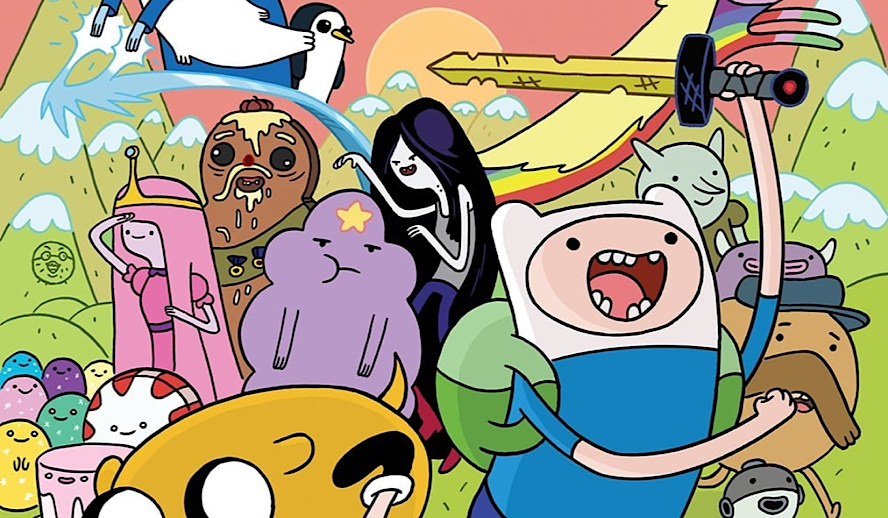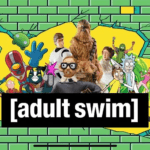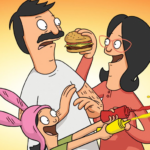Table of Contents

Photo: ‘Adventure Time’/HBO MAX
It was two years ago on September 3, 2018, that Adventure Time aired its final episodes on Cartoon Network. Since it first debuted in 2010, the show (created by Pendleton Ward, who’d later co-create The Midnight Gospel) would go on to become one of the most popular and influential shows not just on the network but for TV cartoons in general. And despite being aimed at children, over the course of eight years, ten seasons, and 283 episodes it has garnered a huge and devoted adult fanbase thanks to its imaginative visuals, offbeat sense of humor, and genuine depth.
The show’s premise is quite simple: set in the post-apocalyptic and magical Land of Ooo, we follow a young human boy named Finn (Jeremy Shada) and his shape-shifting dog, best friend, and adoptive brother Jake (John DiMaggio) as they roam the land in search of adventure, rescue princesses, and just be as helpful as possible to their friends, neighbors and other inhabitants of Ooo.
Related article: The Renaissance of Animated Adult TV Shows
Related article: ‘The Dragon Prince’ is Cartoon Royalty, Great for Fans of ‘Avatar: The Last Airbender’
It’s that simple jumping-off point that afforded the creators a good deal of freedom: as the show progressed, the world’s mythology was explained and expanded on, and characters gained complex backstories. The result is a show brimming with so much variety, creativity, and visual delight; a show that’s one of the most critically acclaimed of the 2010s, with praise from Entertainment Weekly, NPR, The New Yorker and The A.V. Club, as well as accolades from the Primetime Emmys and a Peabody Award. And the show’s alumni have gone on to create their own great animated shows, including Over the Garden Wall, Summer Camp Island, and Steven Universe.
With that said (and with the recent release of the Adventure Time: Distant Lands specials on HBO Max), here are some examples of the show’s brilliance and why it’s definitely worth watching.
Adventure Time Embraced the Animation Medium and Championed Surreal Humor
What’s great about animation is that anything goes: with budgets less of a concern, the only real limit is the artists’ imagination. The form can open up possibilities for worlds, movement, style, and expression of character. And Adventure Time runs with it. It’s apparent in the character designs: simply drawn, yet expressive and elastic with tube-like bendy limbs. We see it in the imaginative worlds (a kingdom made of candy, for one) as well as the characters who inhabit these worlds: a princess/genius scientist made of bubble gum (Princess Bubblegum), a snarky vampire rocker who drinks the color red (Marceline the Vampire Queen), numerous food and candy-themed citizens, and a female rainbow/unicorn hybrid who only speaks Korean (Lady Rainicorn), just to name a few. It’s all quite trippy.
Subscribe to Hollywood Insider’s YouTube Channel, by clicking here.
The point is, despite episodes being only 11 minutes long, each is tantalizing in the prospect of seeing whatever strange new character, concept, or place the creators have come up with. The show’s penchant for experimentation is also apparent in how it’s willing to hand over episodes to guest animators and allow them to incorporate different animation styles, like video game-esque CGI animation or stylized paper cut-out design.
Another hallmark of the show is its offbeat comedic style. Instead of going louder and sillier like many kids shows, the show’s humor goes in different directions: think surreal, with abrupt endings, frequent non-sequiturs, and dialogue that sounds more casual and loosely scripted. Even as it’s methodically planned (as all animated works are), there’s something almost organic and unscripted about the whole thing. The best way to imagine it is Dungeons & Dragons with strong indie comedy sensibilities. The show’s combined use of random and subtle humor would influence other shows on Cartoon Network, including We Bare Bears and Uncle Grandpa. And one can arguably draw a line connecting Adventure Time even to shows like Rick and Morty or BoJack Horseman in their willingness to embrace the strange: something Adventure Time popularized.
The Show Grew Up With its Characters
While the show maintained its sense of humor and kid-friendly appeal, as it progressed it would tackle more complex storylines and themes—like the gradual reveal of the nuclear war that led to the show’s universe. This also extends to the show allowing its characters to grow.
Related article: The Power of Positivity: Ikorodu Bois + Chris Hemsworth + Russo Brothers + Sam Hargrave
Limited Time Offer – FREE Subscription to Hollywood Insider – Click here to read more on Hollywood Insider’s vision, values and mission statement here – Media has the responsibility to better our world – Hollywood Insider fully focuses on substance and meaningful entertainment, against gossip and scandal, by combining entertainment, education, and philanthropy.
Unlike most animated shows where time is static, the people of Adventure Time actually grow up with the show. For example, at the time of the first episode, our main character Finn is 12 years old but by the final season, he’s 17 and still voiced by the same actor. With each passing season, you can hear Finn—and Shada’s—voice deepens as he goes through puberty; it’s similar to how audiences watched the cast of Harry Potter grow up over the years. And his growth is also reflected in his character’s journey. He began the show as a good-hearted kid with a strong sense of right and wrong. But as he grows up, later seasons see him deal with scenarios that put him through the emotional wringer the way many kids do in real life: heartbreak, absentee/deadbeat parents, pondering his place in the world, and a general lack of direction in his life; the show even lets him make some selfish decisions. But in learning from his mistakes and accepting the things he can’t change, he becomes a more well-rounded individual.
And consider the show’s initial primary antagonist: the Ice King (Tom Kenny), a wizard with ice powers. He began the show as a hilariously ineffectual villain obsessed with kidnapping princesses. But his personality was expanded over time, revealing a surprisingly deep and tragic backstory of how a good man was corrupted by a magic crown, leading to mental instability, the loss of his loved ones, and loneliness. It’s very heavy stuff, with parallels to social isolation and mental illnesses like Alzheimer’s and bipolar disorder (of course it never gets too heavy, maintaining some silliness and dark humor).
Other examples include Jake’s easy-going nature revealing a surprisingly strong capacity for empathy as well as his difficulty at being a parent; Princess Bubblegum’s (Hynden Walch) benevolence as a ruler masking a darker aspect and even her own personal insecurities; or how Marceline’s (Olivia Olson) trickster demeanor belies feelings of detachment and fear of emotional connection. The point is, these characters became quite multi-faceted as time went on. And on the subject of Bubblegum and Marceline…
Related article: Hollywood Insider’s CEO Pritan Ambroase: “The Importance of Venice Film Festival as the Protector of Cinema”
Related article: The Masters of Cinema Archives: Hollywood Insider Pays Tribute to ‘La Vie En Rose’, Exclusive Interview with Director Olivier Dahan
It’s Quietly Revolutionary in Terms of LGBTQ Representation
The show’s representation in this field was more subtle at first: notably in BMO (Niki Yang), Finn and Jake’s robot/game console friend who’s coded as having a fluid gender identity; and a popular recurring segment involved the adventures of gender-flipped versions of the cast. But as early as the show’s third season in 2011, Adventure Time had also hinted at a romantic history between Princess Bubblegum and Marceline. Olson herself confirmed it to fans, but the show itself had to hold back as it did also air in countries where homosexuality is illegal. But as the show progressed we saw more and more hints of their relationship, culminating in the two finally sharing an on-screen kiss in the final episode.
Another animated show from the 2010s, The Legend of Korra, confirmed its main character to be bisexual in the final moments of the show. But it had to be ambiguous for the same reasons as Adventure Time. The fact of the matter is, getting LGBTQ representation in kids’ shows was a risk in the early-to-mid 2010s. The threat of censorship loomed in the air, as well as fear of complaints from parents and moral guardians. Basically, both shows had to be coyer about it.
Related article: ‘Kipo and the Age of Wonderbeasts’ is the Must-Watch Epic Adventure for Fans of ‘Avatar’ and ‘Steven Universe’
Related article: Inspirational Kids TV Shows: Modern Parents can Trust Kids TV to be a Good Influence
But the positive response from fans gave other creators the courage to step up their efforts in bolstering LGBTQ representation. And we see the end result in shows like She-Ra and the Princesses of Power, The Owl House, Kipo and the Age of Wonderbeasts, and of course, Steven Universe (whose creator Rebecca Sugar began as a storyboard artist and writer on Adventure Time) that are more open in highlighting LGBTQ characters, either as leads or as parts of an ensemble cast. The strides these shows made were possible thanks to Adventure Time paving the way for them as a bellwether. Long story short, Adventure Time walked so that others could run.
Conclusion
I remember the first time I watched Adventure Time when it debuted; I was 22 then. What I remembered was how different it felt from other animated shows at the time. Instead of the typical freneticism we tend to associate with other kids’ shows, it had a more calming and laid-back feel to it (though it definitely has plenty of manic energy) even as the show’s mythology began to expand and the stakes grew higher. It’s very charming.
And that’s what Adventure Time is: it’s just warm and charming as all out. It took beautiful and colorful worlds, quirky humor, likable and compelling characters with heart, tonal shifts, and surprising progressiveness and somehow melded them together into a cohesive whole; one that puts a smile on kids’ and adults’ faces. I love this show.
All episodes of Adventure Time are currently streaming on HBO Max.
By Mario Yuwono
Click here to read Hollywood Insider’s CEO Pritan Ambroase’s love letter to Black Lives Matter, in which he tackles more than just police reform, press freedom and more – click here.
An excerpt from the love letter: Hollywood Insider’s CEO/editor-in-chief Pritan Ambroase affirms, “Hollywood Insider fully supports the much-needed Black Lives Matter movement. We are actively, physically and digitally a part of this global movement. We will continue reporting on this major issue of police brutality and legal murders of Black people to hold the system accountable. We will continue reporting on this major issue with kindness and respect to all Black people, as each and every one of them are seen and heard. Just a reminder, that the Black Lives Matter movement is about more than just police brutality and extends into banking, housing, education, medical, infrastructure, etc. We have the space and time for all your stories. We believe in peaceful/non-violent protests and I would like to request the rest of media to focus on 95% of the protests that are peaceful and working effectively with positive changes happening daily. Media has a responsibility to better the world and Hollywood Insider will continue to do so.”
Ways to support Black Lives Matter Movement to end systemic racism
More Interesting Stories From Hollywood Insider
– Want GUARANTEED SUCCESS? Remove these ten words from your vocabulary| Transform your life INSTANTLY
– Compilation: All James Bond 007 Opening Sequences From 1962 Sean Connery to Daniel Craig
– Do you know the hidden messages in ‘Call Me By Your Name’? Find out behind the scenes facts in the full commentary and In-depth analysis of the cinematic masterpiece
– A Tribute To The Academy Awards: All Best Actor/Actress Speeches From The Beginning Of Oscars 1929-2019 | From Rami Malek, Leonardo DiCaprio To Denzel Washington, Halle Berry & Beyond | From Olivia Colman, Meryl Streep To Bette Davis & Beyond
– In the 32nd Year Of His Career, Keanu Reeves’ Face Continues To Reign After Launching Movies Earning Over $4.3 Billion In Total – “John Wick”, “Toy Story 4”, “Matrix”, And Many More
Adventure Time, Adventure Time, Adventure Time, Adventure Time, Adventure Time, Adventure Time, Adventure Time, Adventure Time, Adventure Time, Adventure Time, Adventure Time, Adventure Time, Adventure Time, Adventure Time, Adventure Time, Adventure Time, Adventure Time, Adventure Time, Adventure Time, Adventure Time, Adventure Time, Adventure Time, Adventure Time, Adventure Time, Adventure Time, Adventure Time, Adventure Time, Adventure Time









